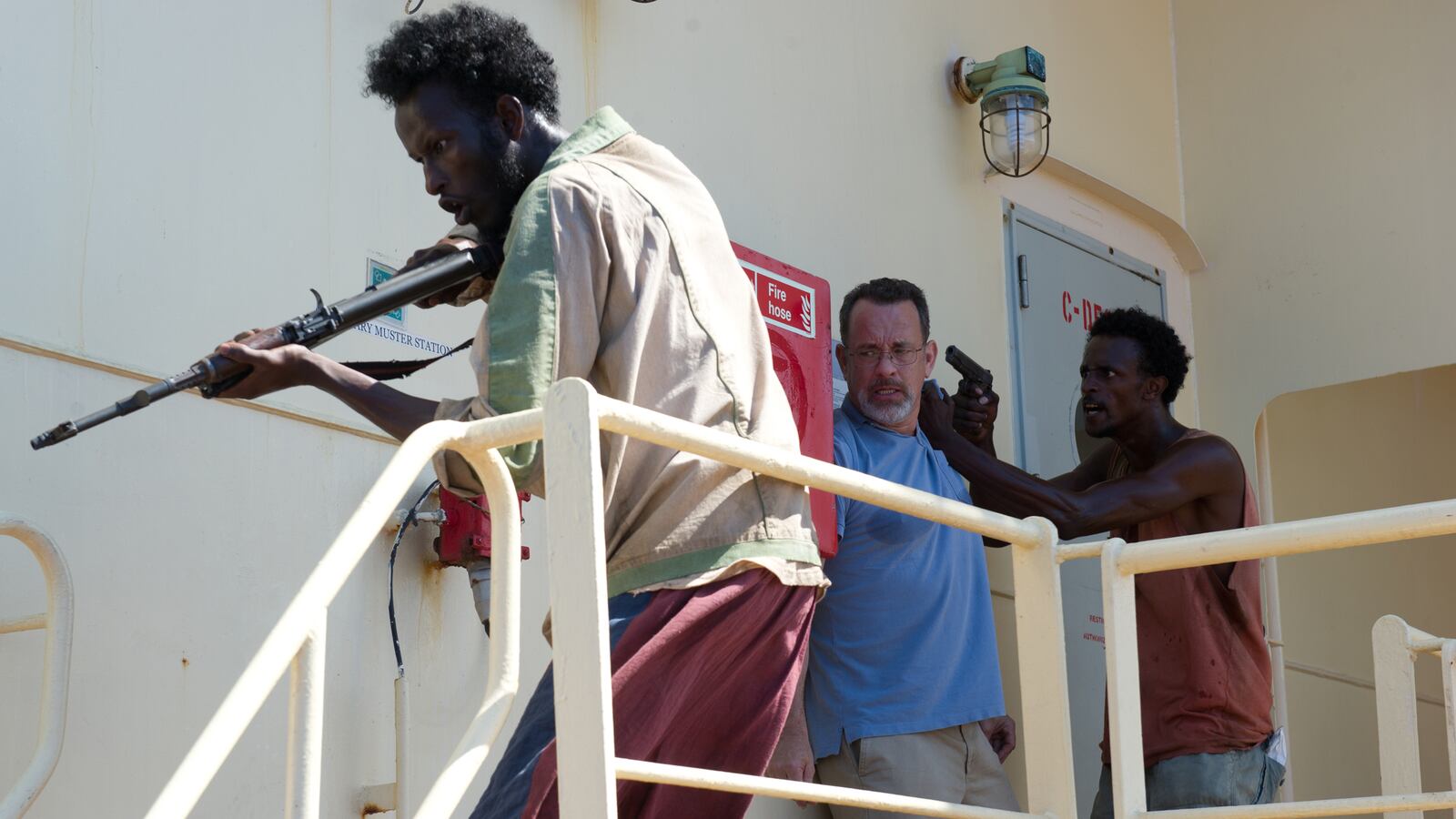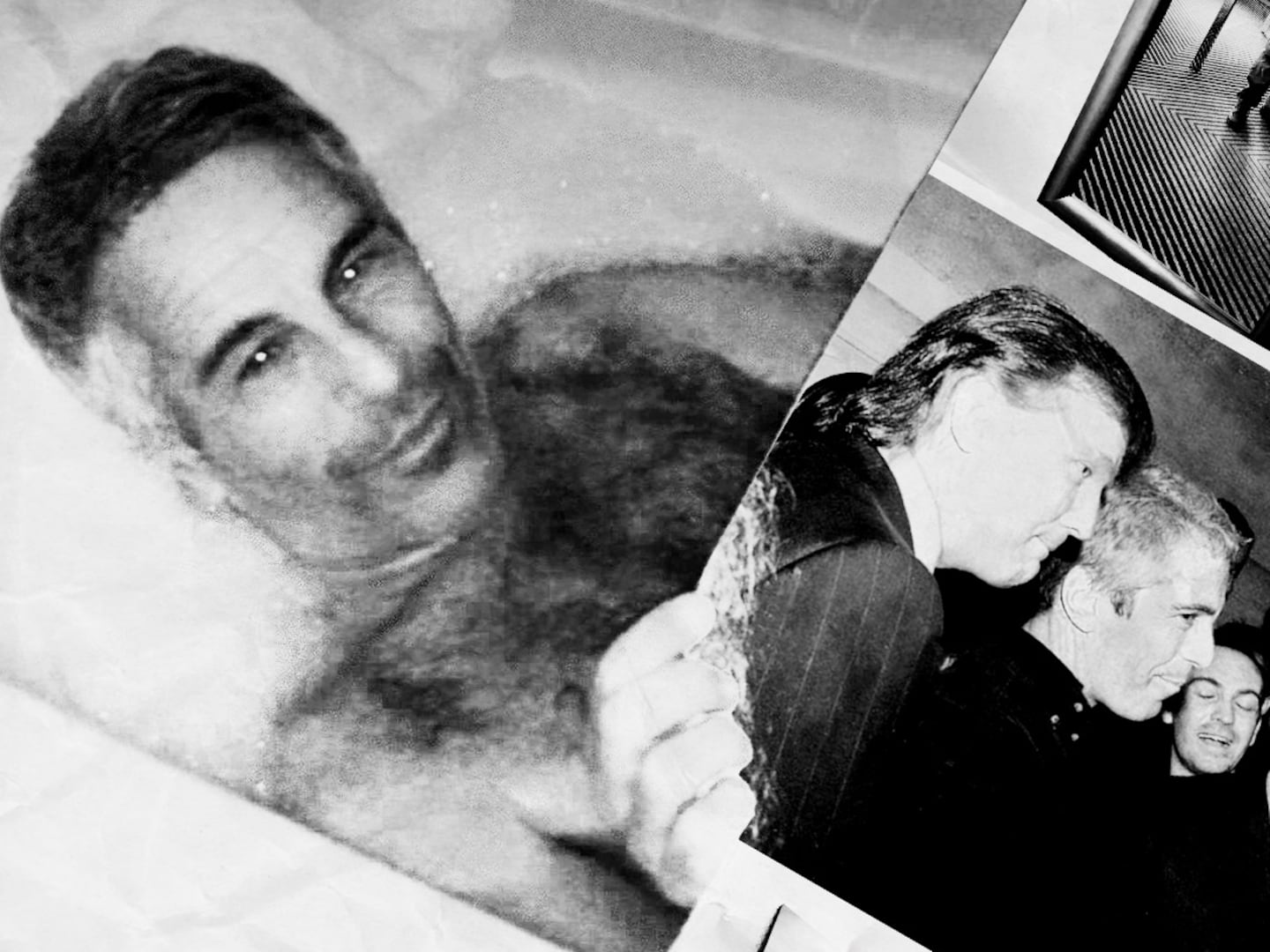The dream of the ’90s is alive this awards season.

Sandra Bullock’s gripping turn as an astronaut lost in space in Gravity has brought her a two-week reign atop the box office charts and a guaranteed Oscar nod. Julia Roberts delivers one of the best performances of her career as Meryl Streep’s fiery daughter in August: Osage County. And Tom Hanks is stunning as the titular seaman in Captain Phillips.
It’s April 8, 2009, and Capt. Richard Phillips (Hanks) and his crew of 20 are sailing aboard the Maersk Alabama about 240 miles off the coast of Somalia en route to Mombasa, Kenya, when four Somali pirates wielding AK-47s board their container ship. With no weapons onboard, the crew is forced to outsmart the pirates. They eventually overpower the Somalis’ gaunt leader, Muse (Barkhad Abdi) and attempt to broker an exchange for Phillips. But the pirates sabotage the deal and make off in a lifeboat with Phillips, along with $30,000 in cash. The USS Bainbridge, a nearby destroyer that responded to the hijacking alert, intercepts the lifeboat off the coast of Somalia. They’re joined by a group of Navy SEAL snipers who parachute in to help. After an incredibly suspenseful standoff, the marksmen take out the pirates in the lifeboat, saving Phillips.
When Phillips emerges from the lifeboat, he’s covered in Somali blood. He’s taken aboard the Bainbridge and escorted to the infirmary. He’s shaking uncontrollably.
“It’s a moment like I’ve never had making films,” said Hanks at a New York Film Festival post-screening Q&A. “It’s not on the page at all.”
According to Hanks and director Paul Greengrass (United 93), the film’s final five minutes in the infirmary were completely unplanned. They’d filmed an ending in a different part of the ship that was OK, but it didn’t feel right.
“We shot a scene upstairs which was a similar scene, because we felt there had to be a cathartic moment where you understood what the experience had meant,” said Greengrass. “But we could tell it wasn’t perfect.”
The crew were shooting aboard the real USS Bainbridge and, after shooting the end scene, Greengrass went over to the ship’s captain and asked, “What did you do with Phillips when you first got him onboard?” The captain replied, “Well, he was a mess, so the first thing we did was get him to the infirmary to get him cleaned up.” Greengrass paused and said, “Well, why don’t we go have a look at the infirmary?” So the cast and crew went down to the bowels of the ship, where they’d never set foot before and, surrounded by some of the ship’s real crew members, Greengrass asked, “What would you do if someone came in?” followed by, “Should we give it a try?” Cinematographer Barry Ackroyd took a few minutes to set up some lighting, and away they went.
In the scene, Phillips is completely shell-shocked. He can barely make out what the woman in the infirmary is saying. He slowly removes his shirt as medical personnel clean the Somali blood off his face. Then it all hits him. Phillips, who has remained a paragon of composure throughout his terrifying ordeal, begins to sob. Then convulse. He can’t stop sobbing.
“We shot it maybe four or five times, and to me, what was extraordinary about it was Paul’s willingness to see it as a possibility and just go, ‘Well, let’s give it a shot,’” said Hanks. “We had the crew of the infirmary and they didn’t know they were going to be in a movie that day. They thought they’d maybe be extras, but here they are with cameras on them. There’s a procedure that you can be very confident in, and there is a behavior that, if you’re lucky, you can recreate. The first take completely fell apart because these people had never been in a movie before and they could not get past the horrible self-consciousness of everything going on around them. So we stopped and tried it again. At that point, the people were quite amazing, particularly the woman [who tended to Phillips], and we just ran through it. It took about an hour and a half.”
In that mesmerizing five-minute sequence, shot very tight by Ackroyd and Greengrass, Hanks goes to a place he hasn’t been since Philadelphia. And when this generation’s Jimmy Stewart breaks down, well, we all follow suit.
“The actor’s job is to divine and embody the truth, and that day was a very interesting case in point,” said Greengrass. “With great actors, there’s just a tiny gap. The door is there, and it takes courage to walk through it, as an actor, and find the truth. That’s what is there in that scene—the truth of vulnerability, shock, confusion, and all the things that you’d expect of an experience like that. There’s a shocking sense of humanity. You have to seize those moments…and Tom did.”






